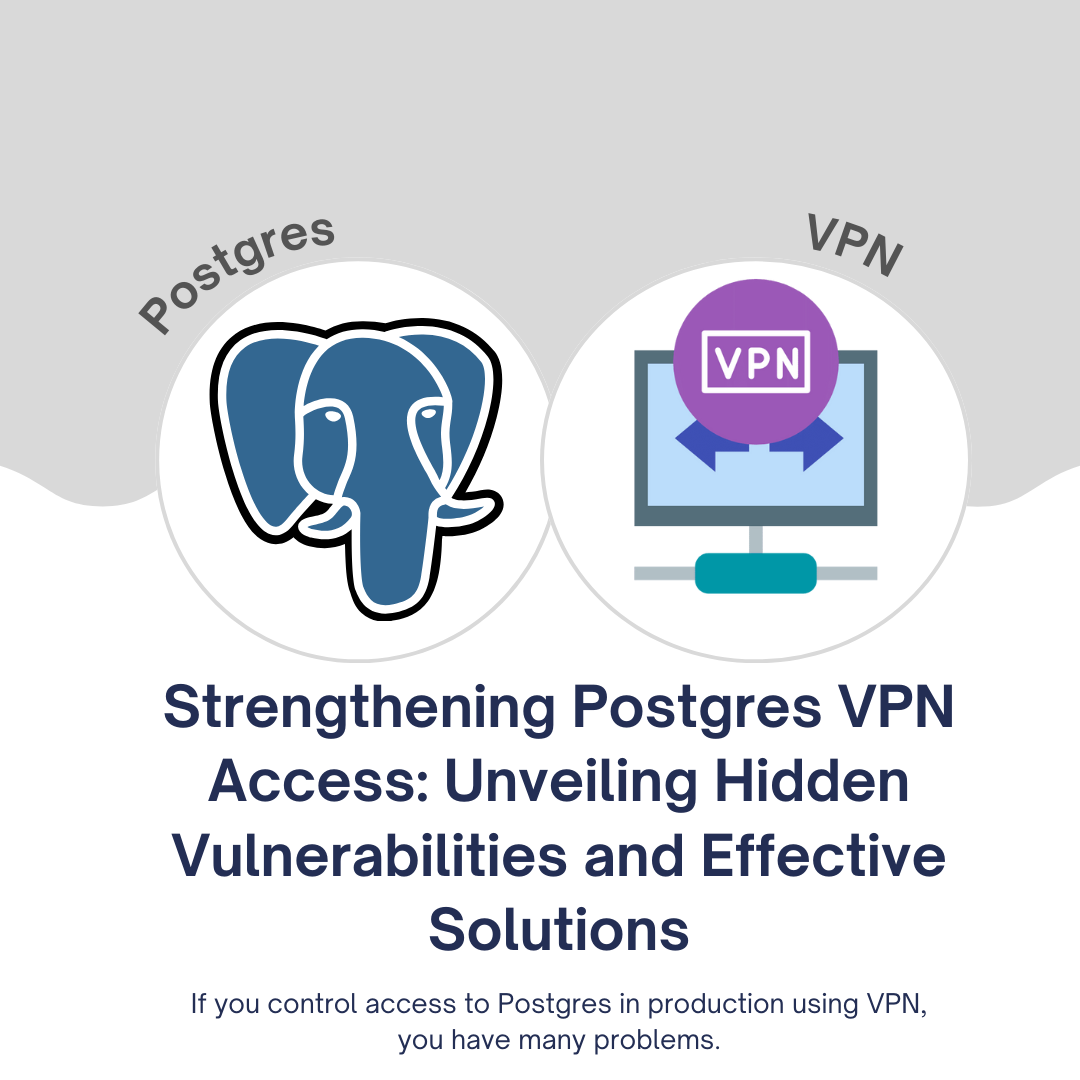Strengthening Postgres VPN Access: Unveiling Hidden Vulnerabilities and Effective Solutions

In the realm of managing access to Postgres in a production environment via VPN, there are often numerous challenges that organizations face. In this article, we will delve into the five most prominent problems encountered in this context, explore their implications, and identify practical strategies to mitigate their impact.
The Critical Need for Efficient Access
Before we delve into the issues surrounding Postgres VPN access, it's essential to recognize the critical role efficient access plays in a production environment. Swift access to the right engineers is pivotal for maintaining product speed, troubleshooting, addressing bugs, and resolving incidents, all of which rely heavily on rapid data access.
Regrettably, many teams adopt suboptimal solutions for granting access, inadvertently introducing significant security risks and inefficient workflows. Building a robust infrastructure for Postgres access via VPN can be a painstaking endeavor, with missing components often leading to hidden vulnerabilities.
Identifying the Hidden Vulnerabilities
When it comes to securing Postgres access, several hidden vulnerabilities lurk beneath the surface. While these issues may not always be at the forefront of discussions, they constitute substantial attack vectors that require immediate attention:
1. Single Sign-on (SSO) & Multi-Factor Authentication (MFA)
The absence of SSO and MFA mechanisms can leave your Postgres access exposed to potential threats. These essential security features are vital for protecting your database.
2. Audit Trials and PII Protection
Audit trails and safeguarding personally identifiable information (PII) are crucial for maintaining data integrity, complying with regulations like GDPR, PCI, SOC2, and HIPAA, and safeguarding sensitive information.
3. Compliance
Different industries have varying compliance requirements. Neglecting these industry-specific compliance needs can result in legal and reputational consequences.
4. Developer Experience
A seamless and user-friendly developer experience is paramount for efficient operations. Cumbersome workflows hinder productivity and may lead to workarounds that compromise security.
Implementing Solutions: The 80/20 Rule
Now that we've identified the hidden vulnerabilities, it's time to address them systematically. Here are four steps to help you mitigate these issues and fortify your Postgres VPN access:
1. Add Postgres to Existing Systems
Leverage your current infrastructure to simplify the integration process. For instance, if you are already using Google Workspaces, you don't necessarily need an LDAP directory. Integrate SSO with Google OAuth to reduce complexity and expedite implementation.
2. Prioritize Features Based on Industry Needs
Tailor your approach to Postgres access based on your industry's specific requirements. Focus on the features that align with your business objectives and compliance obligations. Streamline workflows to minimize access steps.
3. Leverage Comprehensive Access Management Solutions
Simplify access management by consolidating it into a single tool. Instead of using multiple tools for different access needs, consider solutions like Runops that encompass a wide range of use cases, from cloud provider access to database management. Sacrificing a slightly worse user experience for everything in favor of a single, manageable tool is often a wise trade-off.
4. Introduce Friction to Undesirable Access Methods
While it may not be the most favored approach, adding friction to undesirable access methods can encourage teams to adopt more secure practices. For instance, if engineers are habitually accessing production Postgres via a less secure method, such as AWS web console, introduce a form submission process to incentivize the ideal, secure method. Gradually improve the experience to make the secure method more attractive.
Conclusion
Efficient and secure Postgres VPN access is essential for the smooth operation of any production environment. By recognizing and addressing the hidden vulnerabilities, implementing solutions that align with industry needs, consolidating access management, and introducing controlled friction to undesirable methods, organizations can fortify their Postgres access while ensuring security, compliance, and optimal productivity. Remember, prioritizing the right features and simplifying access management can go a long way in achieving these goals.
